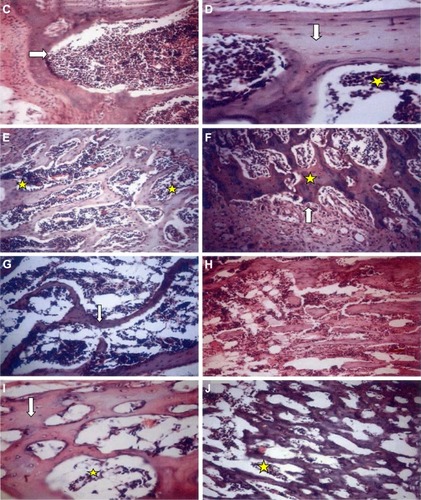Figures & data
Table 1 The mean serum level of bone resorption and formation markers among the five groups
Figure 1 Histopathological examination of rats’ bones of the five groups by light microscopy stained by H&E. (×200).
Abbreviation: H&E, hematoxylin and eosin.


Table 2 Demographic data of the examined 70 postmenopausal patients
Table 3 T-scores of femoral neck, lumbar spine and distal radius of the examined 70 patients at the start and at the end of the 18 months study period
